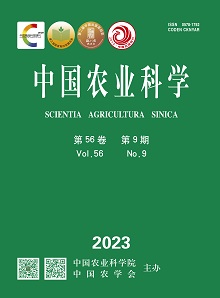【Objective】 The aim of this study was to investigate the accuracy of computed tomography (CT) technology in the in vivo estimation of carcass and meat quality traits in boars, so as to achieve intelligent measurements of the phenome, and thus provide technical parameters for selection and feeding management of boars. 【Method】 In the present study, 40 Duroc boars of similar weight ((42.02±1.05) kg) and in good health were selected and starved for 24 h. After that, general anaesthesia was administered by intravenous injection of anaesthetic at the ear margins. The boars were placed on the CT scanning bed in the prone position of the head, front and tail, and the original image sequences were obtained by 16-slice spiral CT scanning. The images were then subjected to thin layer reconstruction with denoising, multi-planar reconstruction, and segmentation by image processing techniques in order to quantitatively analyze the images, and combined with B-ultrasound in vivo measurement and slaughter measurement to evaluate the carcass traits of boars, such as carcass composition, backfat thickness, eye muscle depth, eye muscle area, carcass straight length, and carcass sloping length. A prediction model for carcass leanness of breeding boars was constructed using partial least squares regression analysis with slaughter-measured leanness as the dependent variable and CT-measured backfat thickness, eye muscle depth, eye muscle area, carcass straight length, and carcass sloping length as the independent variables. The Soxhlet extraction method was used to determine the content of intramuscular fat (IMF) in the longissimus thoracis, gluteal medius, and semimembranosus samples, and then the correlation analysis was performed with the intramuscular fat content in the corresponding parts of the CT in vivo assessment.【Result】When analyzing the correlation between CT in vivo evaluation and slaughter determination of lean percentage, fat percentage, bone percentage, and skin percentage, it was found that the correlation coefficient (r) between the two parameters was above 0.85, showing a strong correlation (P<0.01); subsequently, after a one-variable linear regression analysis, the coefficient of determination (R2) was 0.832, 0.820, 0.800, and 0.740, respectively. In addition, there was no significant difference (P>0.05) between CT and slaughter measurements of backfat thickness, eye muscle depth, carcass straight length, and carcass sloping length. When measuring backfat thickness at the thoracolumbar junction (P2 point), the difference between B-ultrasound and slaughter measurements was significant (P<0.05), while the difference between CT in vivo assessment and slaughter measurements was not significant (P>0.05). In a regression model using partial least squares to predict the carcass lean percentage of boars, the root mean square error of prediction (RMSEP) and R2 were 0.1472 and 0.934, respectively. Furthermore, the content of intramuscular fat was measured by CT, and CT estimation and slaughter measurements of the longissimus thoracis, gluteus medius, and semimembranosus were strongly correlated (P<0.01), with correlation coefficients (r) of 0.837, 0.815, and 0.786, respectively. One-variable linear regression analysis revealed a highly significant positive linear correlation (P<0.01) between in vivo CT assessment and post-slaughter measured intramuscular fat content.【Conclusion】CT technology allowed accurate in vivo determination of carcass traits, such as lean percentage, fat percentage, bone percentage, backfat thickness, and eye muscle depth, as well as intramuscular fat content of meat quality indicators, which provided a technical support for the continuous improvement of breeding performance and thus more accurate selection of relevant traits.









